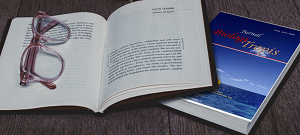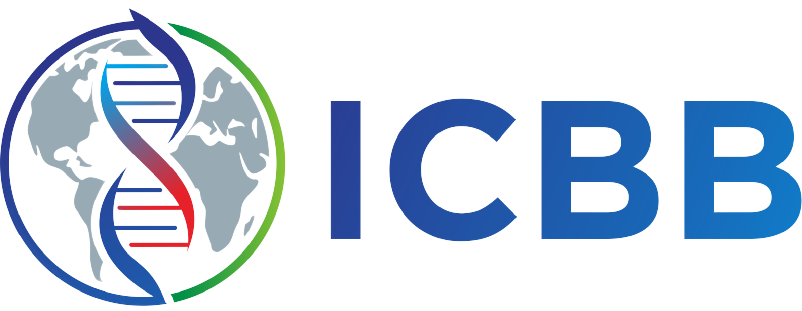Community Structure of Macroalgae in the Coastal Waters of Klui Beach, North Lombok
Authors
Dipo Ario Kusuma , Lalu Japa , Ahmad RaksunDOI:
10.29303/jbt.v25i2.8841Published:
2025-05-15Issue:
Vol. 25 No. 2 (2025): April-JuniKeywords:
Community structure, macroalgae, seaweed, Klui Beach.Articles
Downloads
How to Cite
Downloads
Metrics
Abstract
Macroalgae or also called seaweed are defined as macroscopic marine algae. This study aims to analyze the structure of macroalgae community in the coastal waters of Klui Beach, North Lombok. Samplings were conducted by using the combination of line transect and quadrat method. The macroalgae data collected were analyzed for calculating of species diversity index, eveness index, dominance index, and importance value index. The results showed that the community of macroalgae in the coastal water of Klui Beach consists of 11 species. The community of macroalgae of the coastal water of Klui Beach had species diversity index value of 1,661 (moderate category), evenness index value of 0,693 (relatively non-uniform category). However, the species dominance index value was 0,246 which indicates that there was no dominance species. Ulva intestinalis was the species with the highest importance value (81,93%). This species was also recorded as the highest density. Environmental protection efforts must be considered in the development of tourism areas for the sustainability of macroalgae community in the coastal waters of Klui Beach, North Lombok.
References
Al-Yamani, F., Polikarpov, I., Alghunaim, A., & Mikhaylova, T. (2014). Field guide of marine macroalgae (Chlorophyta, Rhodophyta, Phaeophyceae) of Kuwait. Kuwait: Kuwait Institute for Scientific Research.
Ariani, S., Idrus, A. A., Japa, L., & Santoso, D. (2020). Struktur komunitas makroalga sebagai indikator ekologi ekosistem perairan pada kawasan konservasi laut daerah di Gili Sulat Lombok Timur. Jurnal Biologi Tropis, 20(1), 132–138. https://doi.org/10.29303/jbt.v20i1.1690
Carpenter, K. E., & Niem, V. H. (1998). FAO species identification guide for fishery purposes: The living marine resources of the western central pacific. Rome: Food and Agriculture Organization of the United Nations.
Coppejans, E., Prathep, A., Leliaert, F., Lewmanomont, K., & De Clerck, O. (2010). Seaweeds of Mu Ko Tha Lae Tai (SE thailand): Methodologies and field guide to the dominant species. Bangkok: Biodiversity Research and Training Program.
Darajati, W., Pratiwi, S., & Herwinda, E. (2016). Indonesian biodiversity strategy and action plan, 2015-2020. Jakarta: Kementerian Perencanaan Pembangunan Nasional/Bappenas.
Deta. (2022, September 20). Pantai Klui di Lombok Utara indahnya tiada tara. Retrieved October 1, 2024, from Lombok Info website: https://lombokinfo.id/destinasi/pantai-klui-lombok-utara/
Domroes, M. (1993). Maldivian tourist resorts and their environmental impact. In P. P. Wong (Ed.), Tourism vs Environment: The Case for Coastal Areas (pp. 69–82). Dordrecht: Springer Netherlands. https://doi.org/10.1007/978-94-011-2068-5_6
Erniati, Erlangga, & Andika, Y. (2022). Rumput laut perairan Aceh. Yogyakarta: KBM Indonesia.
Fuhrer, B. A., Christianson, I. G., Clayton, M. N., & Allender, B. M. (1988). Seaweeds of Australia. Sydney: Reed Pty Ltd.
Giller, P. S. (1984). Community structure and the niche. Dordrecht: Springer Netherlands. https://doi.org/10.1007/978-94-009-5558-5
Guiry, M. D. (2024). How many species of algae are there? A reprise. Four kingdoms, 14 phyla, 63 classes and still growing. Journal of Phycology, 60(2), 214–228. https://doi.org/10.1111/jpy.13431
Hadi, Y. S., Japa, L., & Zulkifli, L. (2023). Bacillariophyceae diversity as bioindicator of pollution in the coastal waters of klui beach, north lombok. Jurnal Biologi Tropis, 23(1), 73–79. https://doi.org/10.29303/jbt.v23i1.4387
Hurd, C. L., Harrison, P. J., Bischof, K., & Lobban, C. S. (2014). Seaweed ecology and physiology (2nd ed.). Cambridge: Cambridge University Press.
Karnan, Santoso, D., Japa, L., & Raksun, A. (2018). Makroalga di daerah intertidal Pulau Lombok bagian selatan. Jurnal Biologi Tropis, 18(1), 109–121. https://doi.org/10.29303/jbt.v18i1.738
Kirana, I. A. P., Kurniawan, N. S. H., Abidin, A. S., Nikmatullah, A., Sunarwidhi, A. L., Jupri, A., … Prasedya, E. S. (2021). Identification and abundance of macroalgae at Batu Layar Coast, West Lombok, Indonesia. IOP Conference Series: Earth and Environmental Science, 913(1). https://doi.org/10.1088/1755-1315/913/1/012057
Lobban, C. S., & Harrison, P. J. (1997). Seaweed ecology and physiology. New York: Cambridge University Press.
Magurran, A. E., & McGill, B. J. (2011). Biological diversity: Frontiers in measurement and assessment. New York: Oxford University Press.
Mittelbach, G. G., & McGill, B. J. (2019). Community ecology (2nd ed.). Oxford: Oxford University Press. https://doi.org/10.1093/oso/9780198835851.001.0001
Mushlihah, I., Japa, L., Mertha, I. G., & Raksun, A. (2020). Community of seaweeds on Cemara Beach East Lombok. Jurnal Biologi Tropis, 20(2), 290–297. https://doi.org/10.29303/jbt.v20i2.1926
Nguyen, H., Lamb, D., Herbohn, J., & Firn, J. (2014). Designing mixed species tree plantations for the tropics: Balancing ecological attributes of species with landholder preferences in the Philippines. PLoS ONE, 9(4). https://doi.org/10.1371/journal.pone.0095267
Odum, E. P. (1971). Fundamentals of ecology (3rd ed.). Philadelphia: Saunders.
Rajendra, A. (2020). Climate change impacts on the coastal tourist resorts of Bali. IOP Conference Series: Earth and Environmental Science, 423(1), 012044. https://doi.org/10.1088/1755-1315/423/1/012044
Sangeetha, J., & Thangadurai, D. (2022). Seaweed biotechnology: Biodiversity and biotechnology of seaweeds and their applications (1st ed.). Boca Raton: Apple Academic Press. https://doi.org/10.1201/9781003300854
Sembiring, T. Br., Irmawati, Sabir, M., & Tjahyadi, I. (2024). Buku ajar metodologi penelitian (teori dan praktik). Karawang: CV Saba Jaya Publisher.
Smith, T. M., & Smith, R. L. (2015). Elements of ecology (9th ed.). Harlow: Pearson Education Limited.
Syahza, A. (2021). Metodologi penelitian, edisi revisi. Pekanbaru: Unri Press.
Tee, M. Z., Yong, Y. S., Rodrigues, K. F., & Yong, W. T. L. (2015). Growth rate analysis and protein identification of Kappaphycus alvarezii (Rhodophyta, Gigartinales) under pH induced stress culture. Aquaculture Reports, 2, 112–116. https://doi.org/10.1016/j.aqrep.2015.09.001
License
Copyright (c) 2025 Dipo Ario Kusuma, Lalu Japa, Ahmad Raksun

This work is licensed under a Creative Commons Attribution 4.0 International License.

Jurnal Biologi Tropis is licensed under a Creative Commons Attribution 4.0 International License.
The copyright of the received article shall be assigned to the author as the owner of the paper. The intended copyright includes the right to publish the article in various forms (including reprints). The journal maintains the publishing rights to the published articles.
Authors are permitted to disseminate published articles by sharing the link/DOI of the article at the journal. Authors are allowed to use their articles for any legal purposes deemed necessary without written permission from the journal with an acknowledgment of initial publication to this journal.


























